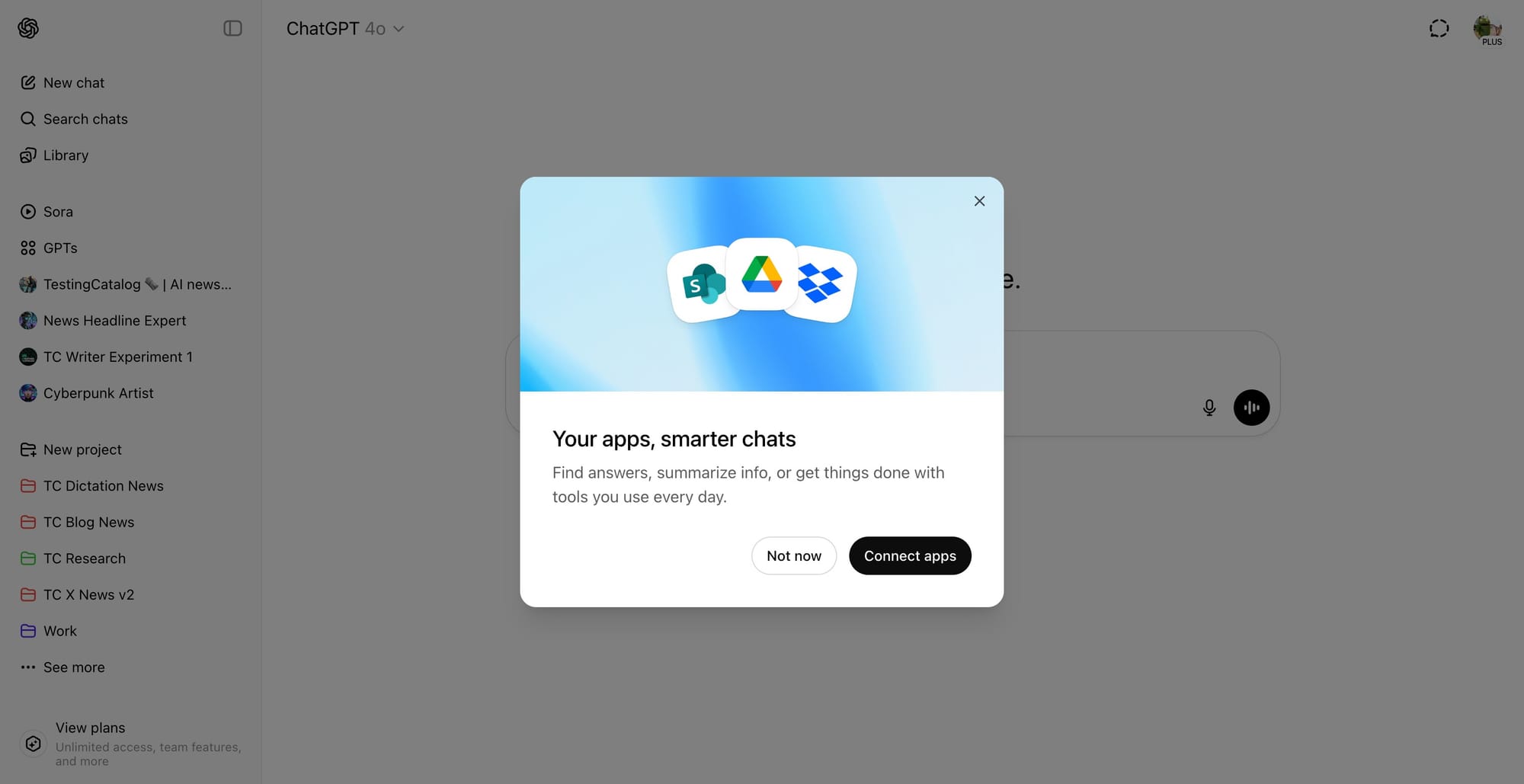OpenAI is working on broadening its support for connectors in ChatGPT, with early signs that more global users will soon see additional options beyond Google Drive and OneDrive. In the US, users already have access to Dropbox and Box, and ongoing development suggests connectors for services like Slack and Datadog are on the way, some likely targeted at enterprise and team accounts, reflecting the company's focus on the business sector.
The new ChatGPT web app version includes an option to add custom connectors based on the Model Context Protocol (MCP) pic.twitter.com/lVyCLYyFV4
— Tibor Blaho (@btibor91) May 13, 2025
A key element in this upcoming release is the integration of MCP, which stands for Model Context Protocol. This protocol enables the creation of custom connectors, letting users define an endpoint (RemoteMCP URL), set a custom icon, and integrate it directly into ChatGPT’s workflow. This approach closely resembles the RemoteMCP system recently adopted by Claude, allowing for even more flexible connections to external services or proprietary tools. With this in place, organizations and power users will be able to configure ChatGPT to access or interact with virtually any system that exposes a compatible interface.
Preview of the new ChatGPT connectors and the option to add a custom connector using MCP https://t.co/OQavjxKEvA pic.twitter.com/wxxIvvG0QS
— Tibor Blaho (@btibor91) May 15, 2025
While the specific rollout timeline remains unclear, it’s anticipated that MCP support will initially land on the desktop application, giving early access to advanced integration capabilities. For users who depend on tailored automation or unique data sources, this represents a major expansion in what ChatGPT can do within professional and organizational environments.
These efforts reinforce OpenAI’s strategy to make ChatGPT more valuable for business users by supporting both mainstream connectors and custom integrations via Model Context Protocol. This push towards extensibility keeps pace with similar moves by other leading AI platforms, as companies look for new ways to embed AI into daily workflows and specialized operations.






